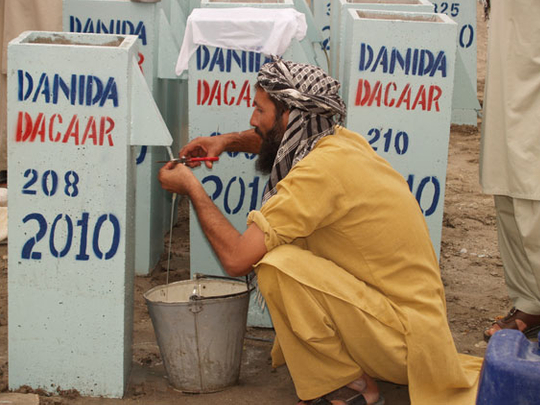
Jalalabad: It's made of concrete, gravel and sand and costs just $25 (Dh92) to make, but the biosand filter has the potential to save 50,000 children a year.
The simple technology starts its life as a hollow concrete pillar. After seven days of drying, it's washed out with liquid shampoo, painted and transported to the site. Then work begins on installation of the filter itself.
First, a spirit level is used to ensure that the filter is standing level.
Then, 12cm of clean water is poured in through a muslin cloth — this is to speed up the process of installing the filter. A total of 5cm of 12mm diameter underdrain gravel is placed at the bottom. On top of this goes 5cm of 6mm diameter separating gravel — this prevents the filtration sand from going into the drainage layer and outlet tube.
Before the gravel is placed in the filter, it is carefully washed by hand and levelled.
Sand to 47cm deep is then added and a metal diffuser plate is placed on top.
More clean water is poured over the top all of these.
After one month, a "biolayer" will form. It is imperative that 5cm of water must lie above the biolayer — additionally, there must be ample space between the biolayer and the diffuser plate for the biosand filter to function adequately.
The water is then controlled with the plastic spout, which is where the clean water will eventually come out.
A piece of muslin cloth is the penultimate ingredient — it acts as one of the first filters for the dirty water. A wooden lid settles on top, keeping the muslin in place, also preventing contamination and unwanted pests from getting into the water.
The biosand filters each have a capacity of 12 litres of water on each fill. It is most effective and efficient when operated intermittently but consistently. The pause period should be a minimum of one hour after the water has stopped flowing, up to a maximum of 48 hours.
The filter can produce 70 to 100 litres of clean water, for a household's drinking and cooking requirements.












